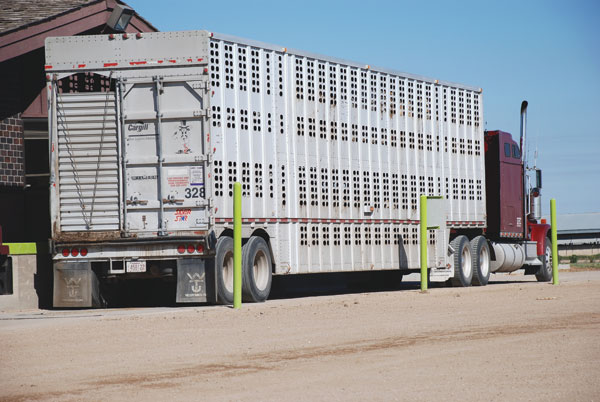Can cattle traceability work at the speed of commerce? An on-the-ground study seeks to find out.

A coalition of industry and government in Kansas on Saturday kicked off a pilot program for a mandatory disease traceability program for cattle.
Named Cattle Trace, the pilot aims in 2018 and 2019 to involve about 55,000 cattle from farm to feedlot through slaughter, and to use mock disease events to test the logistics of such a system. Many of the projects in the past have tested the equipment that is required in a traceability program.
The organizers started with a top-down organizing scheme, gathering support from three major packers, and now are in the process of setting up participation with 10 to 15 feedyards and four to five sale barns, followed by enough farm/ranch-level beef producers to obtain the 55,000 cattle, says Cassie Kniebel, Cattle Trace project manager.
Cattle Trace will use ultra-high frequency technology to collect what it calls "the minimal data necessary," including an individual animal identification number, a GPS location, and date and time, in order to track animals in the event of a disease outbreak. Tag readers will be livestock markets, feedyards and beef processors. Movement data collection will begin in fall 2018, and the project will continue for about two years.
Kniebel expects the project to begin in earnest this fall with data collection and the first tests should begin next spring. She adds that the first report on the logistics and function of the system should be created by next summer. This is to include an economic analysis.

The catalyst for this project in part traces to a policy change by the Kansas Livestock Association (KLA) last fall to change policies and support mandatory traceability instead of its previous stance for voluntary traceability only, says Mary Soukup, assistant secretary for the Kansas Department of Agriculture.
Another factor is NCBA, in accordance with its Beef Industry Long Range Plan, commissioned and released in January 2018 a feasibility study about things to consider in the development of a national ID and traceability system. Here is the link to this report from World Perspectives, Inc., called US Beef Cattle Identification and Traceability Systems. In other words, this is part of a national movement toward mandatory traceability.
One of the strikes against traceability has always been the worry such information will be readily available to any level of government. Soukup replies the Cattle Trace group is designing a system that is to be privately held and only available to government in the event of a disease outbreak.
Soukup and Kniebel say the Cattle Trace project is a collaborative partnership among the Kansas Department of Agriculture, USDA, Kansas State University Beef Cattle Institute, Kansas Livestock Association and individual producer stakeholders.
For information about the Cattle Trace project, go to cattletrace.org.
About the Author(s)
You May Also Like



